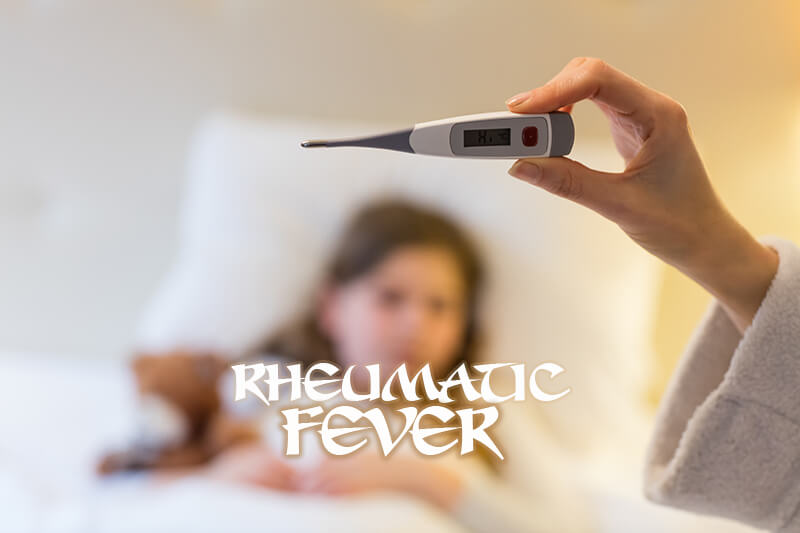Rheumatic fever is an autoimmune disease that causes inflammation in the body’s tissues. Also called acute rheumatic fever, this condition causes the body’s immune system to attack its own tissues, causing inflammation (swelling). Rheumatic fever disease develops as a rare complication when the body’s immune system overreacts to a strep throat or scarlet fever infection (caused by an infection with streptococcus bacteria) that goes untreated. If left untreated, rheumatic fever can cause permanent damage to the heart – including damaged heat valves and heart failure.
Assigning the correct medical codes on the medical claims can be challenging as there are several codes and coding guidelines on how to report rheumatic fever. Partnering with a reputable medical coding service provider can ensure correct coding and efficient claims management for optimal reimbursement.
Rheumatic fever may affect the joints, heart, blood vessels, brain and skin. Anyone can get affected by rheumatic fever. But, it most commonly appears in children in the age group of 5 – 15. However, younger children and older adults can contract the illness as well.
Most people who get strep throat or scarlet fever don’t develop rheumatic fever. It only occurs when these conditions don’t get properly treated. When people get rheumatic fever, it usually develops two to three weeks after an untreated strep throat or scarlet fever.
Symptoms of Rheumatic Fever
Rheumatic fever can affect people in different ways. Signs and symptoms of the condition can vary widely, depending on what part of the body the disease impacts. There may be few symptoms or several, and these can change during the course of the disease.
In certain cases, people experience very mild strep symptoms that they don’t realize they had a strep infection until rheumatic fever develops later on. The onset of rheumatic fever generally occurs about 2 to 4 weeks after a strep throat infection. Common symptoms include –
- Fever
- Swollen, tender and red joints (particularly in the large joints such as the knees, ankles, wrists and elbows)
- Unexplained or ongoing headaches
- Chest pain and abnormal heart beat
- Fatigue
- Flat or slightly raised, painless rash with a ragged edge
- Heart murmur
- Jerky, uncontrollable body movements (most often in the hands, feet and face)
- Small, painless bumps beneath the skin
Several factors like – genes, environmental factors, age, and overall health of the patient tend to increase the risk of this condition in the long run.
How to Diagnose Rheumatic Fever
There is no test for diagnosing rheumatic fever. Diagnosis of this condition is based on a detailed medical history evaluation, physical examination and certain test results. Physical examination may be performed to look for a rash or skin nodules, check heart abnormalities and examine the joints for inflammation. Movement tests may also be performed to identify nervous system dysfunction. Blood tests may be performed to check for signs (markers) of inflammation in the blood. Other tests include – electrocardiogram (ECG or EKG) and echocardiogram.
Treatment for rheumatic fever will focus on treating the infections, relieving symptoms and controlling inflammation. Common treatment modalities include – antibiotics, anti-inflammatory medications and anti-seizure drugs. Physicians will also recommend bed rest and restricted activities until the major symptoms like pain and inflammation have passed. In case the fever has caused heart problems, strict bed rest will be recommended for a few weeks or months.
ICD-10 Codes to Report Rheumatic Fever
Physicians treating patients with rheumatic fever need to document the treatment administered using the right medical codes. Partnering with a reputable medical billing and coding company can ensure accurate claim submission. Here are the ICD-10 codes for a rheumatic fever diagnosis –
- I00 Rheumatic fever without heart involvement
- I01 Rheumatic fever with heart involvement
One of the most effective ways to prevent rheumatic fever is to start treating strep throat infections or scarlet fever promptly within several days of contracting the infections. In addition, practicing proper hygiene habits like – covering the mouth (when coughing or sneezing), avoiding contact with sick people and washing hands can help prevent the occurrence of strep throat infections.
Billing and coding for rheumatic fever can be complex. For accurate and timely billing and claims submission, physician practices can rely on the services of reputable medical billing and coding outsourcing companies that provide the services of AAPC-certified coding specialists.




